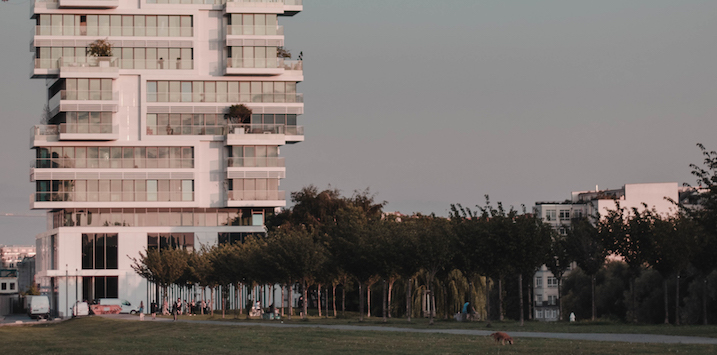
The government is trying to keep apartment buyers in the dark
Not only has the NSW Government made decisions that have led to the construction of many defective apartment buildings, it has now warned councils to not make the list of affected buildings public. You have to ask yourself: is hiding valuable information from would-be buyers a good way to govern?
A while ago, I wrote a blog post about who should pay when the building you bought an apartment in turned out to have serious defects. My view is that it is a clear “buyer beware” situation and that owners should first go after developers and builders but that there should not be any public bail-out which would socialize losses amongst all tax payers.
As David pointed out in his recent post, part of the defects are the number of buildings that has been constructed with flammable cladding. Flammable cladding is what caused the Grenfell Tower tragedy in London in 2017 and also the Lacrosse fire in Melbourne in 2014. As David pointed out in his post, the cost to rectify affected buildings in Victoria could easily be $7 to 9 billion, so we are talking very substantial sums of money.
In NSW, 435 buildings have so far been identified as “high risk” by the taskforce that the NSW Government assigned to assess and inspect potentially affected buildings. This compares to 409 buildings identified in Victoria with the same classification. Victoria in addition identified 72 buildings with “extreme risk” and 388 with a “moderate risk” but it is not clear if the NSW taskforce has used the same classification but it looks like they have not.
Now, you would think that it would be in the public’s interest that this list is made public so that prospective buyers of apartments have full information and can make an informed choice which is a pre-requisite for a fully functioning and fair market. It is therefore with quite a bit of surprise and disgust that I read that the NSW Government has sent a missive to councils warning them to not make the list of affected buildings in their area public.
The reasons cited by the NSW Government are:
- The potential to impact property prices
- The risk that it would derail the taskforce’s work
- Risk of “terror” and arson
I very much struggle to see why making the list public would in any way risk impacting the taskforce’s work as the list contains only buildings that have already been identified as being affected.
I also struggle to see that publicizing the list would increase the risk for terror as it would not be hard for a potential terrorist worth their salt to have a look through some mail in a building or look at strata noticeboards as information has been sent directly to residents of all affected buildings and it is widely discussed on on-line forums etc.
What I take real issue with is the first reason that it might impact property prices. This is a clear attempt by the NSW Government to try to hide valuable information from buyers and disturb the market.
First of all, it will not be at all successful as hopefully there is no-one who is a serious prospective buyer of an apartment who has not heard about the issues and would make specific inquiries about it when looking at an apartment.
Secondly, it most likely creates the opposite effect in that it could put people off even thinking of purchasing an apartment as, if the list of affected and cleared buildings is not known, it creates doubt that even an issue-free building might potentially have issues.
The NSW Government is still suffering a weakening budget due to falling property market transaction volumes which leads to lower than expected stamp duties; withholding information that creates barriers to transactions is clearly shooting yourself in the foot! This recommendation is hence stupidity exemplified but luckily it seems like at least some councils can see that as well and are making the lists public as can be seen in the article linked above.
This post was contributed by a representative of Montgomery Investment Management Pty Limited (AFSL No. 354564). The principal purpose of this post is to provide factual information and not provide financial product advice. Additionally, the information provided is not intended to provide any recommendation or opinion about any financial product. Any commentary and statements of opinion however may contain general advice only that is prepared without taking into account your personal objectives, financial circumstances or needs. Because of this, before acting on any of the information provided, you should always consider its appropriateness in light of your personal objectives, financial circumstances and needs and should consider seeking independent advice from a financial advisor if necessary before making any decisions. This post specifically excludes personal advice.
INVEST WITH MONTGOMERY
Simon Johns
:
I would have thought that the decision not to publish may lead to potential liability issues for the state government in the future
John
:
Cogent arguments here Andreas, another issues relates to safety and risk management – if particular apartments are very unsafe then residents have the right to know. Such situations might warrant immediate extra measures – residents not be allowed barbecues and other flammable materials on their balconies, have more training in evacuation, perhaps have wardens on duty within buildings with knowledge about which residents have disabilities -and so they can direct evacuation and so on. If these things have been done I stand corrected but I doubt it
Unfortunately leadership on this – like most issues- is likely to be extremely poor.